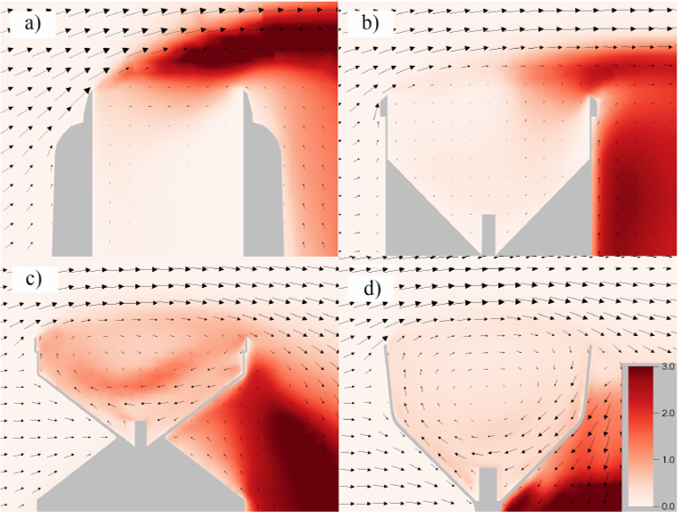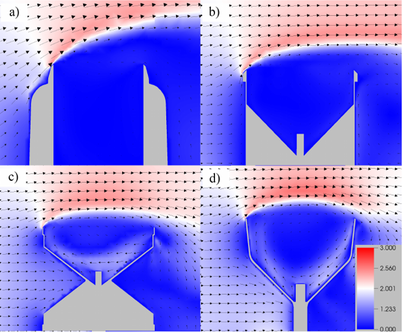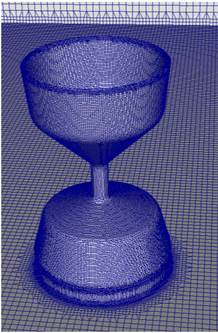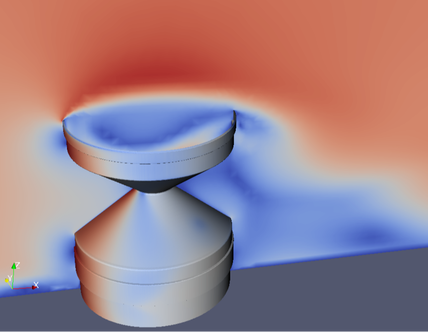Turbulent times - the importance of good aerodynamics
|
EML collaborated with the WMO Lead Centre on Precipitation Intensity (LC-PrIn) to undertake an assessment of the improved performance of aerodynamic rain gauges using Computational Fluid Dynamics (CFD).
Results of the research, published in the internationally leading Journal of Water Resources Research, highlight the benefits of using the EML aerodynamic shape to measure rainfall. |
Turbulence above the orifice of four rain gauges at an input wind speed of 18m/s, with red indicating strong turbulence and white illustrating no turbulence. The gauges are: a) Geonor T200B, b) Casella CEL, c) EML ARG100 and d) EML SBS500. a) and b) are examples of conventional rain gauges, c) and d) are aerodynamic gauge shapes.
|
The CFD study illustrates how EML’s aerodynamic rain gauges cause a recirculating convergent airflow structure above and within the gauge orifice, whereas the conventional shape gauges do not. This enhances the catch efficiency of the aerodynamic rain gauges by encouraging raindrops to fall within the collecting orifice rather than being borne away, to land on the ground surface downstream of the rain gauge. Another finding was that the aerodynamic shape reduces the extent of the turbulence above the collecting orifice, which is illustrated in the captioned figure above. Increased turbulence was thought to cause a reduction of the catch efficiency, and to make it less predictable. The reference for the paper is cited below, with the DOI hyperlink. In summary, EML’s aerodynamic rain gauges are more accurate in the real-world environment than conventional gauges!
Reference: Colli, M., Pollock, M., Stagnaro, M., Lanza, L. G., Dutton, M., & O'Connell, E. (2018). A computational fluid-dynamics assessment of the improved performance of aerodynamic rain gauges. Water Resources Research, 54. https://doi.org/10.1002/2017WR020549




